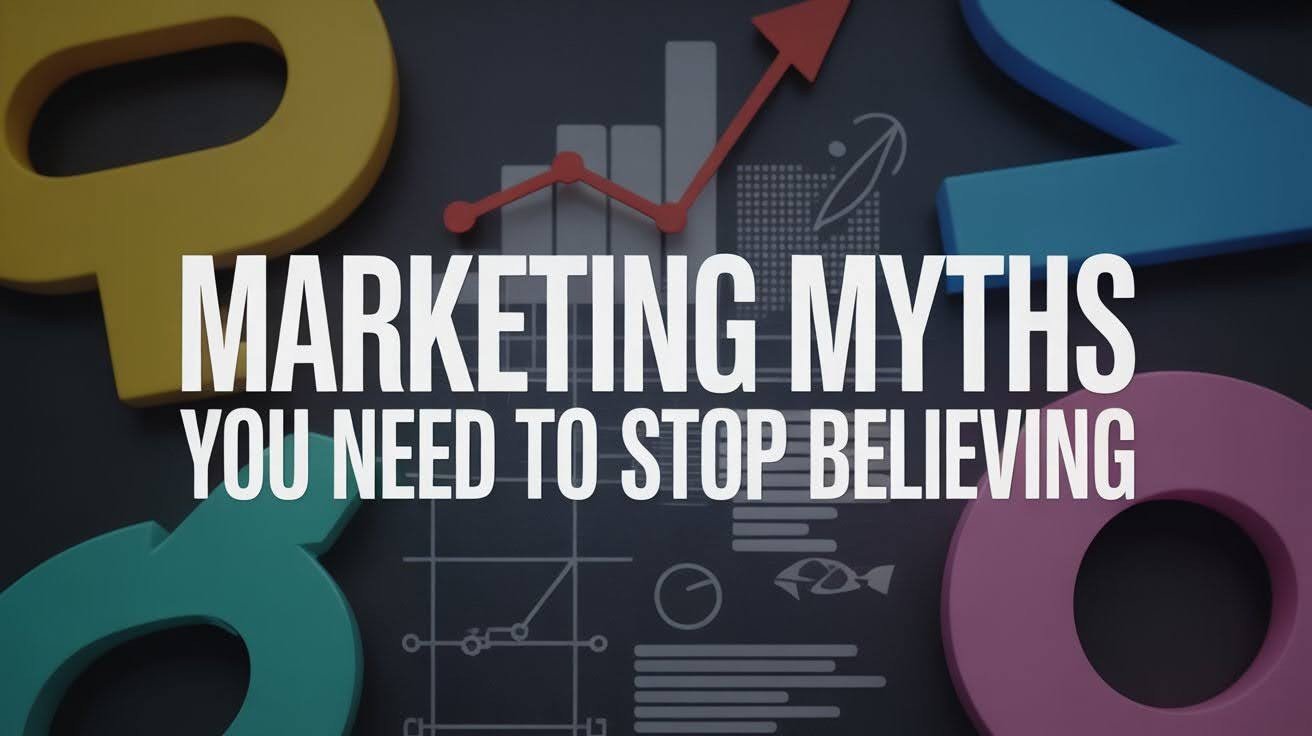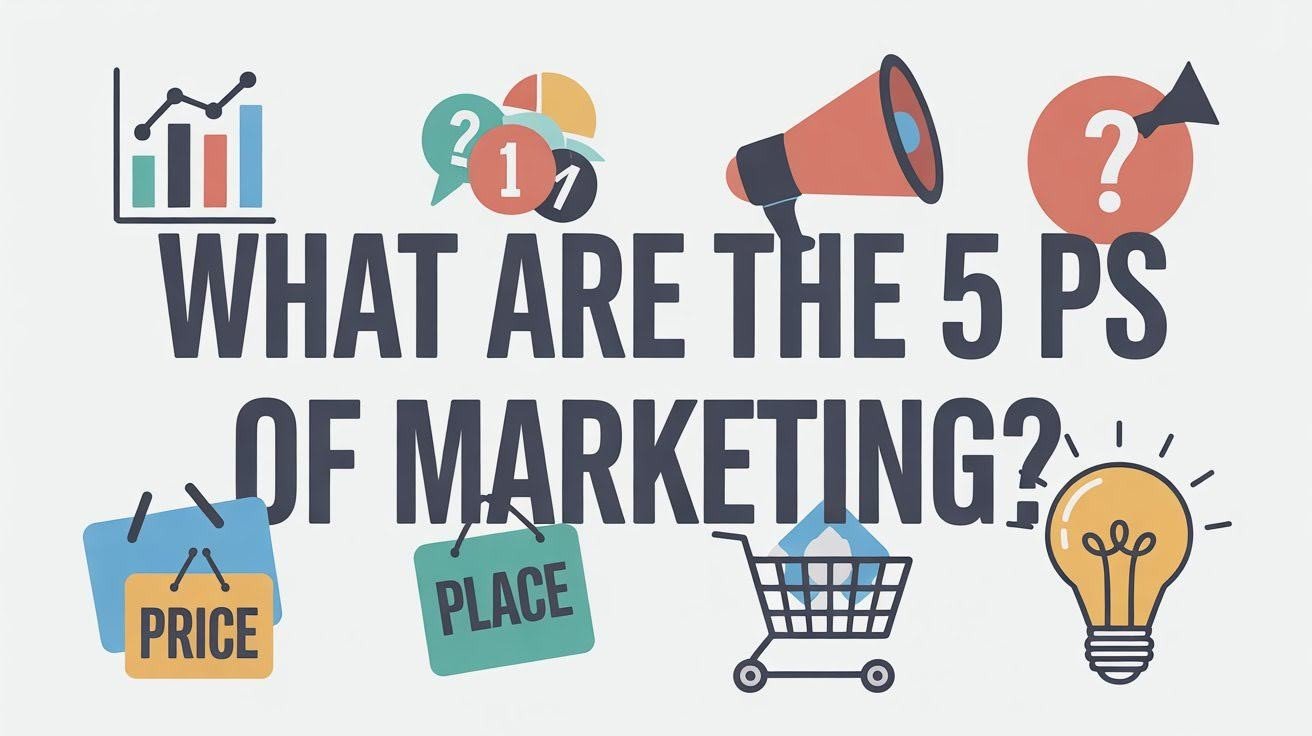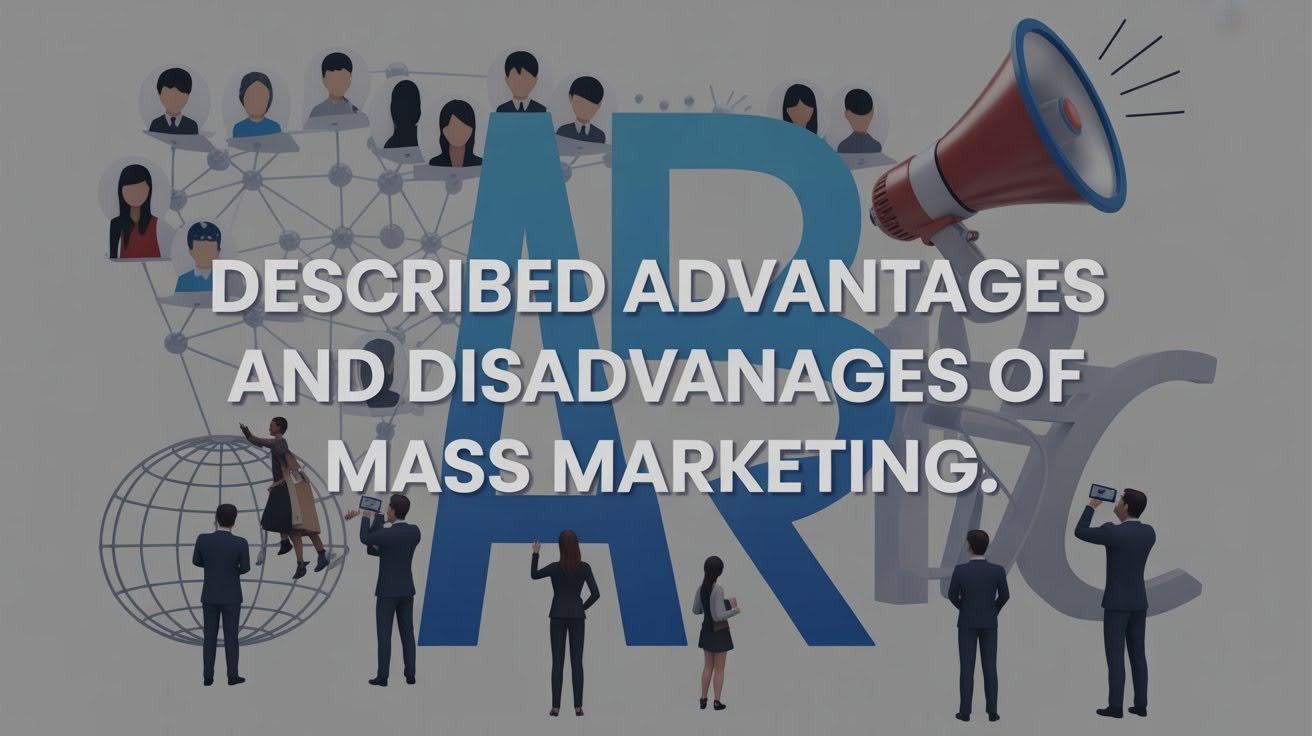Did marketing advice fail you? You’re not alone.
Marketing also changes quickly. What worked five years ago might not work today. AI and social media are rising. Because of this, how we connect with customers is changing.
I’ve been watching. Many companies still seem to believe that old advice still applies. These outdated beliefs are a waste of your time and money. I have viewed it a lot.
You likely heard these myths you might think some are true. I know I did.
In this post, I’m going to debunk 11 marketing myths and explain what actually works (and how you can put it to work for you).
Why Understanding Marketing Myths Matters

Believing the wrong things about marketing costs you money. It’s that simple.
When you follow outdated advice, you waste your budget on tactics that don’t work. Your team spends time on strategies that won’t bring results. Your return on investment suffers.
Here’s the good news. Once you know the truth, you can make smarter choices. You’ll spend your marketing budget where it actually matters.
This applies to everyone. Small business owners. Marketing teams. Agencies. We all benefit when we stop believing myths and start using proven methods.
The difference between success and failure often comes down to knowing what’s real and what’s not.
List of 11 Marketing Myths
Let’s break down the most common misconceptions in marketing today. Here’s what you need to know about each one.
Myth 1: More Content Always Means More Success

Why Volume Alone Fails
Posting content every day sounds smart. But it often backfires.
When you flood your audience with too much content, people get overwhelmed. They stop paying attention. Customers feel bombarded and tune you out.
Reality: Quality Over Quantity
Create fewer pieces, but make them count. Focus on what your audience needs. One well-researched post outperforms ten rushed articles. Your audience remembers quality.
Myth 2: SEO Is Dead

Misunderstanding AI and Search Engines
People say SEO doesn’t matter anymore. They think AI chatbots replaced search engines. But people still use Google billions of times daily.
Reality: SEO Is More Important Than Ever
SEO isn’t dead. It’s different now. Search engines want quality content that helps people. Good SEO means answering real questions and making your site easy to use. If you ignore SEO, you’re invisible online.
Myth 3: Great Products Sell Themselves

Competition and Oversupply
I wish this were true. But think about all the amazing products that failed. The market is crowded. Without marketing, even the best product stays hidden.
Reality: Marketing Builds Awareness and Trust
If nobody knows your product exists, nobody buys it. Marketing tells your story and builds trust. People buy from brands they recognize. Good marketing helps great products reach the right people.
Myth 4: Marketing Requires a Huge Budget

Comparing Big Brands vs SMBs
Big companies spend millions on marketing. This makes small businesses think they can’t compete. But you don’t need a fortune to succeed.
Reality: Strategic, Data-Driven Marketing Works
Smart marketing beats expensive marketing. Use social media, email, and content creation. Marketing automation helps you do more with less. Small budgets force creativity, which is often an advantage.
Myth 5: More Traffic Automatically Means More Sales

Traffic Volume vs Visitor Quality
Getting thousands of visitors feels great. But if they’re not interested in what you sell, those numbers mean nothing.
Reality: Targeted, Engaged Visitors Drive Conversions
Would you rather have 10,000 random visitors or 100 people actively looking for your product? Focus on attracting qualified leads. Track engagement, not just page views. Quality beats quantity.
Myth 6: AI Will Replace Human Marketers

The Fear of Automation
AI can write, copy, analyze data, and schedule posts. Naturally, people worry about losing their jobs. But this fear is misplaced.
Reality: AI Augments Human Expertise
AI is a tool, not a replacement. It handles repetitive tasks so you can focus on strategy. AI can’t understand your brand voice or create emotional connections. Humans bring creativity, empathy, and strategic thinking. The best marketing happens when humans use AI to work smarter.
Myth 7: You Must Be on Every Social Media Platform

Overextending Resources
Facebook, Instagram, Twitter, LinkedIn, TikTok, and Pinterest. Trying to maintain a presence everywhere is exhausting. Your content suffers and your team burns out.
Reality: Focus on the Most Relevant Platforms
Find where your audience spends time. Pick two or three platforms and do them well. Post consistently and engage with your community. Doing three platforms well beats doing ten poorly.
Myth 8: Digital Marketing Brings Instant Results

Quick Wins vs Long-Term Strategies
People start a blog and expect thousands of visitors next week. But building an audience takes time.
Reality: Patience and Consistency Pay Off
SEO takes months. Content marketing builds slowly. You’re building trust and establishing authority. The businesses that succeed keep showing up. Think of marketing like planting seeds. You water them, wait, then harvest.
Myth 9: Email Marketing Is Obsolete

Misconceptions About Engagement
Social media gets all the attention. Email feels old and boring. But email still works incredibly well.
Reality: Email Offers High ROI
For every dollar spent on email marketing, the average return is $36. People check their inbox daily. Personalized, segmented emails perform even better. Email isn’t flashy, but it makes money.
Myth 10: Marketing Automation Reduces Personal Touch

Fear of Impersonal Communication
Automated emails feel robotic. This worry makes businesses avoid automation entirely. They waste hours on tasks that could be automated.
Reality: Automation Enhances Personalization
Good automation makes marketing more personal. You can send birthday emails automatically or trigger messages based on behaviors. This personalization is impossible to do manually at scale. Automation handles repetitive work while you focus on strategy.
Myth 11: Marketing Is Only Needed When Sales Are Low

Stop-and-Go Marketing Hurts Growth
Some businesses only market when desperate. Sales drop, they panic and run a campaign. Sales pick up, they stop. This creates a rollercoaster.
Reality: Continuous Marketing Builds Awareness and Loyalty
Consistent marketing keeps your brand visible. It creates a steady flow of leads. When you stop, people forget about you. The most successful businesses market all the time. Marketing isn’t a switch. It’s an ongoing commitment to growth.
How to Apply These Insights to Your Marketing Strategy
Now that you know the myths, it’s time to fix your strategy. Here’s how to put this knowledge into action.
- Audit your current marketing practices and identify which tactics are based on myths. Write down what you’re doing and be honest about what’s not working.
- Focus on quality over quantity and prioritize channels that actually bring in customers. Cut the tactics that waste money and double down on what delivers real ROI.
- Know your audience deeply and build your strategy around their specific needs. Find out where they spend time and what problems they face, then create content that helps them.
- Use SEO tools like Google Search Console and SEMrush to improve your search visibility. Track your performance and fix what isn’t working to stay competitive.
- Implement marketing automation with tools like HubSpot or Mailchimp to handle repetitive tasks. This frees up your time for strategy while improving personalization at scale.
- Start small with one or two changes and take action today. Pick one myth you’ve been believing and fix that part of your strategy this week.
Conclusion
From content volume to SEO to fear of artificial intelligence, here are 11 marketing myths that can waste your time and money.
What I’ve learned is that in marketing, you have to test, measure and iterate. Not from following outdated advice.
Start today. Pick one myth that you believe, and change the way you think. Find and focus on the needs of your audience. Use data to make decisions. Persist with your efforts.
The businesses that grow are the ones willing to challenge old assumptions. Stop believing myths. While you’re at it, start thinking through a marketing strategy that will give you good ROI.
Frequently Asked Questions
What is the biggest marketing myth businesses believe?
The biggest myth is that more content always means more success. Quality content that solves real problems outperforms high-volume posting every time.
Is SEO still important in 2025?
Yes, SEO is more important than ever. Search engines still drive billions of daily searches, and good SEO helps customers find you when they need you most.
Do I need a big budget to succeed at marketing?
No, you don’t need a huge budget. Smart, data-driven marketing using cost-effective channels like social media and email can deliver great results for small businesses.
How long does digital marketing take to show results?
Digital marketing takes time and consistency. SEO and content marketing typically need several months to build trust and authority with your audience.
Should my business be on every social media platform?
No, focus on platforms where your audience actually spends time. Doing two or three platforms well beats spreading yourself thin across all of them.








